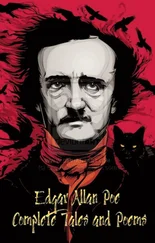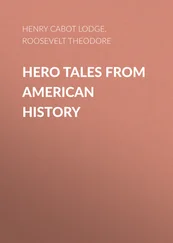Nobody knows just how many died at Wounded Knee. The bodies of Big Foot and 153 other Miniconjous were found, but it is likely that the 300 or 350 camped beside the creek ultimately lost their lives, After a brief fight with the 7th Cavalry on December 30, the Indians withdrew. Two weeks later, on January 15, 1891, the Sioux formally surrendered to U.S. Army officials. It was a miserable end to 400 years of racial warfare on the American continent.
The Least You Need to Know
Few Indians participated directly in the Civil War, but some did take advantage of a reduced military presence in the West to raid and plunder.
The Indian Wars in the West, spanning the Civil War years to 1891, consisted mainly of long, exhausting pursuits and relatively few battles. The strategy was to fight a “total war” against women, children, and old men as well as warriors, in order to force the Indians onto reservations.
Christopher Houston Carson, better known as Kit Carson, was born near Richmond, Kentucky, on December 24, 1809, and grew up in Missouri. He joined a Santa Fe trading caravan when he was 16 and, from 1827 to 1842, lived in the Rocky Mountains as a fur trapper and mountain man. In 1842, Carson served John C. Fremont as a guide in Oregon and California and, during the Mexican War, carried dispatches for him. After the war, Carson settled in Taos, New Mexico, where he served from 1853 to 1861 as Indian agent to the Utes, earning a reputation as one of very few genuinely competent, honest, and compassionate officials.
With the outbreak of the Civil War, Carson became colonel of the First New Mexico Volunteer Cavalry, where he distinguished himself in repelling the Confederate invasion of New Mexico and in combat against the Apache and Navajo. Although he became—in the popular phrase—a legend in his own time, especially for his role as an Indian fighter, Carson was deeply moved by the plight of the Indians, with whom he had a strong fellow feeling. Carson died on May 23, 1868, at Fort Lyon, Colorado.
Fortunately, genocidal phrases rarely enter folklore, but everybody knows the expression “The only good Indian is a dead Indian.” It originated with General Philip Sheridan, when a Comanche named Tosawi came to him to sign a treaty after Custer’s “victory” at Washita. “Tosawi, good Indian,” said Tosawi. Sheridan replied: “The only good Indians I ever saw were dead.” The phrase was subsequently transformed through repetition.
Sitting Bull (Tatanka Iyotake, 1831-90) made an early reputation as a warrior and was revered for his great bravery, strength, generosity, and wisdom. His fame and influence spread far beyond his own a Sioux tribe. With chiefs Crazy Horse and Gall, Sitting Bull led resistance against the white invasion of the sacred Black Hills after gold was discovered there in 1874. Following the annihilation of Custer at the Little Bighorn in 1876, Sitting Bull and his closest followers fled to Canada. Upon his return to the United States in 1881, Sitting Bull was imprisoned for two years and then sent to Standing Rock Reservation. In 1883, he traveled as a performer with Buffalo Bill Cody’s Wild West Show. Buffalo Bill was perhaps the only white man Sitting Bull ever trusted.
In 1890, Sitting Bull was identified with the antiwhite religious movement known as the Ghost Dance. He was killed during a scuffle when reservation police (who were Indians) attempted to arrest him on December 15, 1890.
Joseph surrendered to Nelson A. Miles with words that have come to symbolize the poignant dignity with which Native Americans ultimately bowed to the inevitable:
“I am tired of fighting. Our chiefs are killed. Looking Glass [a war chief] is dead. Toohoolhoolzote is dead. The old men are all dead. It is the young men who say yes or no. He who led on the young men [Joseph’s brother, Ollikut] is dead. It is cold and we have no blankets. The little children are freezing to death. My people, some of them, have run away to the hills, and have no blankets, no food; no one knows where they are—perhaps freezing to death. I want to have time to look for my children and see how many of them I can find. Maybe I shall find them among the dead. Hear me, my chiefs! I am tired; my heart is sick and sad. From where the sun now stands I will fight no more forever.”
From Panic to Empire
(1869-1908)
In This Chapter
Western agriculture and the day of the cowboy
The triumph of capitalism and the rise of philanthropy
Technological revolution
The phrase Wild West has become so worn with use that it’s hard to say the second word without adding the first to it. The spirit that marked the West pervaded national life during the years following the Civil War. If the West had its cowboys and its outlaws, so did the world of big business and power politics in such cities as New York and Washington. Fortunes were made and lost, it seemed, overnight. A wealth of new inventions suddenly materialized, accelerating American life to a pace many found increasingly frenzied. And if tycoons and inventors were pulling the strings, working men and women were often the ones being jerked around.
It the West equaled space, the equation came out differently for different people. To the homesteader, space meant a place to live. To the cattleman, space meant grass and water to fuel the beef herds that made his fortune.
Before the Mexican War, even Texas ranches were relatively modest in size, but the war brought a tremendous demand for beef to feed the U.S. Army. After the cattle industry geared up for this need, it never pulled back. Texans started to drive cattle beyond the confines of the ranch, pushing herds northward to fatten on the grass of public lands before being shipped east. This period was the start of the range cattle industry, which the Civil War threatened to bring to an untimely end. Union blockades kept Texans from shipping their beeves to market, and the cattle were left to run wild on the Texas plains, the ranchers and ranch hands having gone off to fight the war. When the sons of Texas returned after Appomattox, the only visible assets left to many of them were some five million free-ranging animals. Ex-Confederate soldier boys now set up as cowboys, rounding up and branding as many cattle as they could, then “trailing” the herds to grazing lands, marketplaces, and railheads.
The range cattle industry didn’t just make beef; it also created the single most beloved, celebrated, talked about, and sung about worker in American history. If generations of little boys and girls across the Atlantic grow up on tales of knights in shining armor, American children have long been raised on tales, songs, and images of the noble riders of the range. Cowboys embody a very powerful—very American—myth of freedom and self-sufficiency. But from the cold, hard perspective of economic reality, cowboys were the poorest of the poor. Dirty, dangerous, lonely, and poorly paid, cowboy was a job for desperate men: down-and-out ex-Confederates who had lost all they owned; liberated black slaves who, suddenly masterless, found themselves at loose ends; Indians, struggling at the bottom of the socioeconomic ladder; and Mexicans, sharing that bottom rung.
On the ranch, the cowboy’s principal job was to ride over an assigned stretch of range and tend the cattle, doing whatever needed to be done. The most demanding labor was the trail drive, in which cowboys moved a herd of cattle—perhaps as small as 500 head or as large as 15,000—to northern ranges for maturing or to market at railhead cattle towns like Abilene, Ellsworth, and Dodge City, Kansas; Pueblo and Denver, Colorado; and Cheyenne, Wyoming. Distances were often in excess of 1,000 miles over four principal cattle trails. Hazards of the trails were almost as numerous as the herds themselves: storms, floods, drought, stampede, rustlers, hostile Indians. Pay was about $100 for three or four months’ work.
Читать дальше












